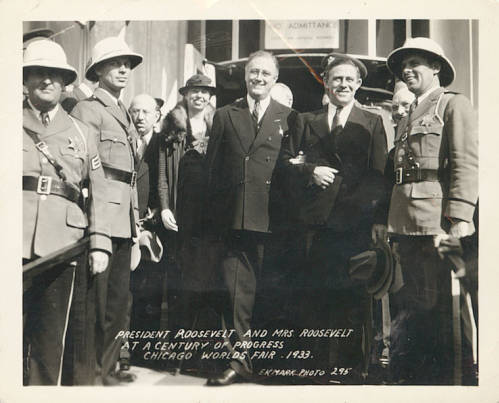A Century of Progress International Exposition: Legacy of the Fair
The first season of the Fair was so successful that President Franklin Delano Roosevelt asked Dawes to reopen in May 1934 and run for a second season, enabling for the first time in American history for an international Fair to pay for itself. However, this commercial and popular success overshadowed the exclusionary character of the scientific and industrial progress championed at the Fair, and would ultimately leave the simmering geopolitical tensions around nationalism unaddressed. While the Nazi flag was never flown at German American days or events during the Century of Progress, the Nazi party was firmly in power with Hitler as chancellor by the start of the Fair’s opening day, while the Fascist party of Benito Mussolini was consolidating power in Italy as well.
Expected to have the effect of a booster shot to the economy and spirits of the nation in 1933, the hopes and expectations around the Century of Progress were high. In some ways, the ideal of progress presented by the Fair would bear fruit. Over the course of the next six years, the cities of Dallas, San Diego, Cleveland, San Francisco, and New York would hold major Fairs, highlighting the enduring legacy of the Century of Progress on the American imagination. With the start of World War II still a few years away, for the moment, fairgoers could marvel at the scientific discoveries and technological wonders at the Century of Progress International Exposition and dream of a better tomorrow.

